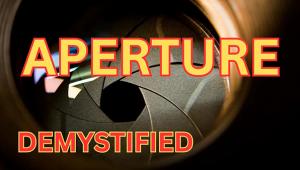It's amazing how far we've come. I have the same exact one at home and even if it'snot working, I always pretend like I'm taking pictures with it. www.toot.ro/author/daniel/
The Leica I: The Camera that Changed Photography

Ninety years ago, at the 1925 Leipzig Spring Fair in Germany, a camera was launched that was destined to change the face of photography. This was a time when it was still common for glass plates to be used in cameras, and those that took roll film were thought of as miniatures. So imagine the culture shock when a still photography camera was produced to take 35mm movie film.
The Leica was by no means the first 35mm camera, but it was the first to make 35mm truly viable, leading to the most popular film format ever.
The camera was the brainchild of Oskar Barnack, who joined Leitz in 1911 as Director of Research. He soon began work on a movie camera, for use with 35mm film, the standard movie gauge of the time. Because emulsion speeds of then current films were unreliable and accurate metering was all but impossible, Barnack built a small device intended to test small batches of movie film. It became apparent, however, that what he had actually created was a miniature still camera, known today as the Ur-Leica.

Barnack’s Baby
A 35mm movie frame size measured 18x24mm, with the film running vertically through the camera. But Barnack ran film through his prototype horizontally, doubling one of the frame dimensions. So was born the 24x36mm negative size that became the standard for 35mm still photography. The year was 1913, one year before the outbreak of World War I in Europe.
Following the war, Barnack returned to his project, modified that first prototype and persuaded Ernst Leitz, head of the company, to build a batch of cameras to test the market.
These cameras, known as the Model 0, were similar to the production models that followed, apart from using a fold-up viewfinder in place of the subsequent optical type. Also, shutter speeds were not designated in fractions of a second, but rather as the width of the slit in the focal plane shutter. The camera used a Leitz 50mm Anastigmat lens.

Reaction from scientists and photographers was sceptical, but Ernst Leitz took the risk, and the result was the camera first seen at the Leipzig Fair. Today, we call it the Leica I, the name derived from LEItz CAmera
Less than 150 of the cameras were made with the 50mm f/3.5 Anastigmat lens from the 0 series, followed by a short run of cameras with an Elmax lens before production settled down to use of a 50mm f/3.5 Elmar, the lens which you’ll see today on the majority of early Leicas.
Specification was sparse. Shutter speeds, from the cloth focal plane shutter, covered 1/25 - 1/500 second. The lens was pulled out on a short metal tube and was pushed back almost flat with the body when not in use. It could not be detached. The viewfinder was mounted separately on the top plate, rather than built in, and there was no rangefinder, other than a separate accessory. The camera was covered with vulcanite, often mistaken for leather.

New Versions Launch
In 1930 a new version was launched as the first Leica with interchangeable screw-fit lenses. At first the lenses were made to match individual bodies and could not be interchanged with other bodies. Soon, however, the lens mount was standardised so that all lenses and bodies were interchangeable. The two types of cameras were differentiated by a small ‘0’ engraved on the lens and body mount of the Standard cameras and lenses.
In 1932, Leitz took a new look at its basic design, and produced the Leica II, which incorporated the previously separate viewfinder into the top plate and, for the first time, added a built-in rangefinder. It was viewed in a window separate from the viewfinder and coupled automatically to lenses from 35mm to 135mm focal lengths.
That camera sparked an interesting phenomenon. As Leica production in Germany fell, following the end of World War II in 1945, so manufacturers around the world, recognising the need for quality cameras, began making their own versions of the Leica II. The result was a series of copies, fakes and imitations. Note the distinction between those differentiations.

Leica copies, made mostly in Russia, were plainly marked on bodies and lenses with their true makers’ names, but were almost screw-for-screw duplicates of the German camera.
Leica fakes, also often made in Russia, were similar to the copies, but falsely marked with the Leica name on the body and the Elmar name on the lens.
Leica imitations, often from Japan, were not direct copies of the original camera, but still showed very obvious influences.
Later, a whole series of Leica II fakes appeared that would have fooled no one, since they were made with garish, totally un-Leica like body coverings and gold-colored fittings.

Third Times the Charm
In 1933 the launch of the Leica III introduced a separate slow speed dial, taking shutter speeds down to one second; and in 1935, the top speed was changed from 1/500 second to 1/1000 second with the launch of the Leica IIIa.
In the years ahead, a truly amazing range of accessories was produced for Leicas, including the Visoflex that turned the rangefinder cameras into single lens reflexes, especially useful for close-up work. Although new models continued to be introduced, the basic design concept remained the same, up until 1950 when the Leica IIIf was introduced. This was the last of the screw lens cameras before the Leica went through a radical new design with the introduction of the M3 in 1954.
Chief among the M3’s many new features were a bayonet mount for lenses in place of the previous screw mount; a rangefinder with a longer base for greater accuracy; and a viewfinder that was not only larger and more usable than before, but also incorporated frames that automatically adjusted for the lens in use.

The new-look M3 was followed in 1958 by a simpler version called the M2, and in 1959 by the M1, an even simpler version of the M2, without rangefinder and made chiefly for scientific photography.
Just as with the screw-lens cameras that predated the M3 with similar basic designs from 1925 onwards, so the design of the M3 continued to evolve with the introduction of, and variations on, the M4, M5 (a slightly different body design, shortly abandoned), M6, M7, and into the digital age that began with the M8 in 2006.
But back in 1956, even though the Leica M3 had exhibited a major rethink in design, Leitz, still produced one last camera based on the original design. It was naturally better specified than the camera produced more than 30 years earlier, but the Leica IIIg still retained the basic design concept envisaged by Oskar Barnack all those years before.

Values
Here’s what should can expect to pay for these classic Leicas: (body plus lens): Leica I, $600-750; Leica II, $300-450; Leica IIIf, $450-500; Leica IIIG, $1,000-1,200; Leica M3, $1,000-1,200.


- Log in or register to post comments


Previously making a simple photo included so much settings and work except for catching the right moment. I am also working on a comparative essay for this <a href="http://thetermpapers.net/">source</a> on modern and antique cameras.

















































